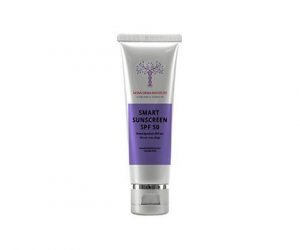Story of Sunscreen

Sun exposure is considered as one of the most common reasons for skin aging. According to scientists, 70% of the normal aging that we see comes from sun exposure alone. While 30% is normal chronological aging. Keeping these facts in mind, we can prevent a lot of skin issues like, fine lines and wrinkles, sun spots, rough leathery texture, broken blood vessels leading to uneven redness and pigmentation.
Ultraviolet light (UV), is the light that comes from the sun. It is divided into two rays; ultraviolet A (UVA) and ultraviolet B (UVB). UVA rays contribute to your skin aging prematurely and UVB rays are why your skin may burn. Understand that sea, snow and sand can contribute toward UV damage. In fact, sea, snow and sand can all reflect off both types of UV rays and double your exposure. Meaning you need more SPF when you are outside in these areas.
There are two types of sunscreen, chemical and physical (mineral). Chemical sunscreens are good for people with healthy skin. But, people with sensitive and acne prone skin will want to avoid chemical sunscreen because it can further irritate already sensitive skin. Mineral sunscreens work like a barrier between skin and the uv rays to deflect sun rays. Even the most sensitive skin types can use it without causing irritation. Your skin specialist or aesthetic specialist can guide you to find the perfect sunscreen for your skin type.
The sun protection factor, or SPF, labeled on the front packaging of sunscreen, explains how many minutes the sunscreen is going to be effective in helping prevent sun burns (UVB). While the percentage of the ingredients listed on the back will inform you of how much it can prevent UVA rays or skin aging rays. You need to reapply your SPF accordingly or at least every two hours.
Things to consider when trying to find the perfect sunscreen for your skin. Look for sunscreens with at least an SPF of 30 or higher. Try not to purchase sunscreens that have parabens and fragrance since these can clog your pores and irritate the skin. Anytime you are looking to buy a new sun screen, always look at the back label to make sure it’s a mineral one and the zinc oxide is more than 7 to 9 %. The SPF number on front of the sunscreen packaging is not a very clear indicator of how protective it is for your skin.
Sunscreen is your best defense against skin damage from the sun. Now that the ozone layer is compromised, we should be extra cautious not only in protecting our skin but our family members skin as well. This is true for all skin types. But you must make sure you get the right sunscreen to protect you and your family.
NOVA DERM INSTITUTE, recommends Blur SPF 50+(Tinted) and Smart Sunscreen SPF50+(Clear) to protect your skin from harmful UVA and UVB rays.
Like I always say, “Sunscreen for life!”
Afsheen Ather
Bachelors in Medicine & Surgery
Licensed Master Instructor, Master Aesthetician and Master Permanent Makeup Artist

